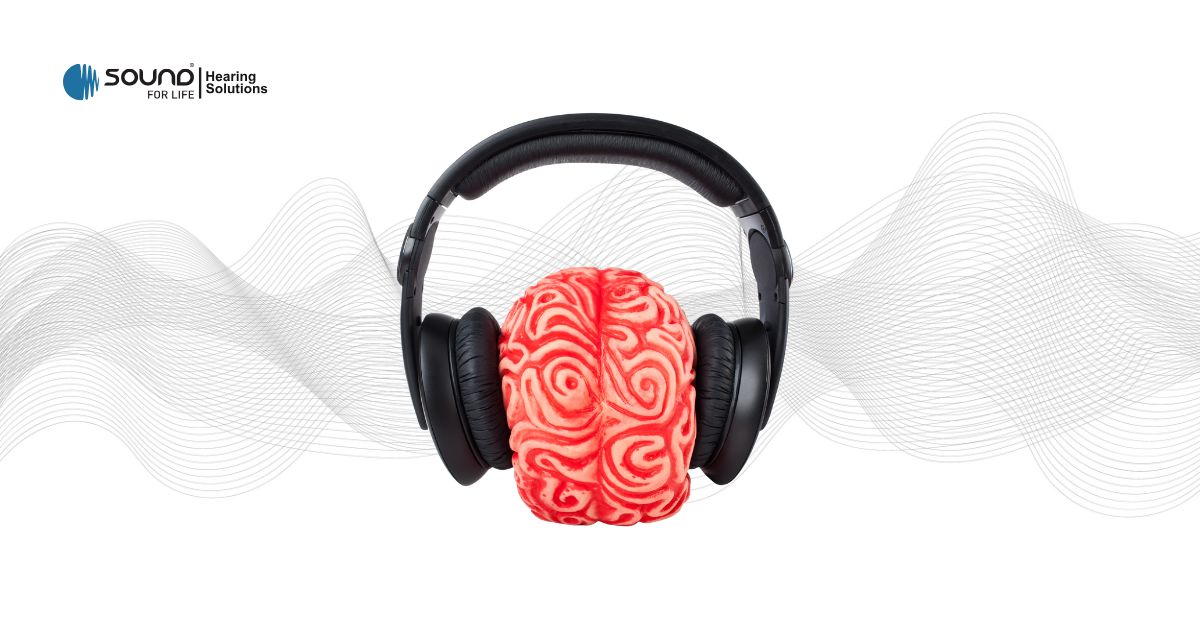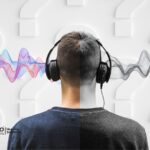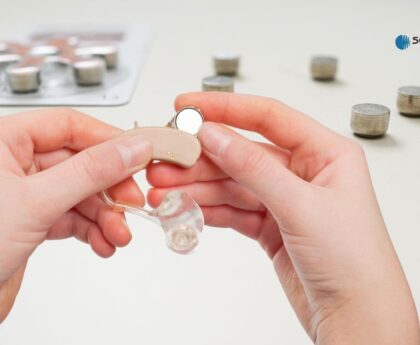It’s surprising how common tinnitus is. It’s the ringing, buzzing, or hissing sound that you hear that no one else can. In fact, research shows that about 10–15% of people around the world have some form of tinnitus. A study has found that about 6.7% of adults in India said they had tinnitus. Many people learn to deal with mild tinnitus, but for some, it can be very distracting or even make it hard to sleep or concentrate.
This article explains how tinnitus masking devices (sound-therapy tools) work and lists the pros and cons of each one so you can choose the one that works best for you.
What is Tinnitus?
Tinnitus is a symptom, not a disease itself. People often say that it sounds like ringing, buzzing, clicking, or hissing in the ears. You might notice it more when things are quiet, like when you’re reading or going to sleep.
There are many reasons why someone might get tinnitus. Exposure to loud noises, head or ear injuries, age-related changes in hearing, or even some medications can all be factors. Tinnitus is often linked to hearing loss, and almost 80% of people with it also have some hearing loss.
There is no one cure for tinnitus, even though it can be annoying. Instead, treatments focus on making the symptom less bothersome. Sound therapy is a common method that uses outside sounds to cover up or distract from the ringing in the ears. This is where masking devices come into play.
What are devices that mask tinnitus?
A masking device is any gadget that makes sound, usually soft noise or background noise, to cover up or hide your tinnitus. The goal is to make the ringing that you don’t want less noticeable.
There are many types of these devices:
- Hearing Aids with Maskers: Many modern hearing aids come with a “sound generator” or masker built in. They play a soft static or natural sound into your ear while also amplifying outside sounds like conversation or TV. This can help mask tinnitus. Hearing aids can help you hear better and make you less aware of your tinnitus because they make the sounds you can’t hear louder.
- White-noise or sound machines are small speakers that sit on your bedside table or are portable. They play loops of soft sounds like rain, wind chimes, or static to fill the silence and drown out tinnitus.
- Smartphone apps and speakers: You can listen to white noise or relaxing soundscapes on a lot of apps and Bluetooth speakers. Instead of a special machine, you can use your phone, computer, or smart speaker to play these sounds.
- Pillow Speakers or Sleep Headsets: Some people use flat speakers inside a pillow or comfortable headband headphones that play sounds that block out other sounds without bothering others.
- Bone-Conduction Maskers: A newer method uses vibrations or sound that travels through bones (devices that sit on the skull) to provide masking noise without blocking the ear.
All of these options work in the same way: they add a soft, steady sound that makes the tinnitus less noticeable. One guide to hearing health says that maskers “generate and emit broadband noise… designed to drown out the auditory sensations of tinnitus.” They make white or pink noise to add an artificial sound to the space around you. You turn up the soft noise level so that the ringing in your ears “blends into the background.”
One of the best ways to mask tinnitus is to use a portable speaker or app. A lot of people listen to white noise or natural sounds, like rain or ocean waves, to help them forget about their tinnitus.
You can try maskers yourself in real life. For example, if the sound of running water from a tap covers up your tinnitus, a white-noise machine is probably going to help you too. Some devices let you choose the type of noise or sound that helps your tinnitus the most, like white noise, pink noise, ocean sounds, and so on.
How do devices that mask work?
The main idea is sound therapy: play a pleasant or neutral sound so your brain has something else to focus on. This helps you focus on something other than the ringing in your ears. A hearing professional says that hearing aids make it “more difficult to consciously perceive tinnitus” by making outside sounds louder. This helps your brain focus on other sounds in the environment. White noise machines also raise the overall sound level in the room, making the difference between silence and tinnitus less noticeable. One article says that maskers “work by raising the ambient level of noise, reducing the loudness of tinnitus as a result.”
Masking doesn’t get rid of tinnitus; it just covers it up. The tinnitus may seem quieter or easier to ignore when the masking sound is on. When you turn it off, the ringing in your ears will usually go back to the same level, though it may seem louder for a short time. Because of this, experts say you shouldn’t always completely block out tinnitus. In fact, complete masking isn’t always the best option. Over time, some exposure to your own tinnitus can help your brain get used to the sound. People today believe that the best results come from a mix of masking and habituation training.
Different kinds of tinnitus masking devices
There are a lot of ways to hide tinnitus, from high-tech to low-tech. Some common choices are:
- Hearing Aids with Tinnitus Sound Features: A hearing aid can help people who have hearing loss and tinnitus at the same time. The aid makes outside sounds louder so you can hear them better. It can also play built-in sounds that cover up other sounds, like white noise, chimes, and nature sounds. A lot of new hearing aids come with programs that are made just for tinnitus. About 60% of people with tinnitus said that wearing hearing aids helped them feel better, and about 22% said it helped them a lot. You can even stream sound from a phone app into your ear with modern digital hearing aids.
- Stand-Alone Sound Maskers: These are small devices that make white noise or other sounds. You plug them in next to your bed or desk, and they make noise all the time (which you can often change). Some of them are battery-powered and can be moved around. Because they specifically cover up tinnitus, they are called “maskers.” The Sound Oasis, for instance, makes calming sleep sounds and white noise that help a lot of people fall asleep even though they have tinnitus.
- Apps for smartphones and tablets: Many apps, such as ReSound Relief and RelaxMelodies, let you play loops of white noise, rain, ocean waves, forest sounds, and more. You can listen through your phone’s speaker or Bluetooth headphones. This can be a very cheap way to hide things.
- Noise-Cancelling Headphones: Some people use “sleep” or noise-cancelling headphones that either play sounds that cover up other sounds or block out outside noise. But real noise-cancelling (which makes things quiet) might not help tinnitus; it’s the extra sound that matters.
- Everyday Sounds: Sounds from everyday life, like a fan, a radio tuned to static, or an air conditioner, can help cover up tinnitus. These aren’t tinnitus devices, but they show the idea: any steady background noise can help you forget about the ringing.
The kind of masker you choose should be based on your comfort level and way of life. An in-ear hearing aid mask is hard to see, and a bedside speaker is quiet at night. Not everything works for everyone. People often try a free option first, like a white-noise playlist or a free phone app, to see if it works before they buy a device.
Do masking devices really work?
Yes and no.
Many people find tinnitus maskers helpful, but they won’t fix the root of the problem. They work by hiding the symptom. Research and surveys show that most users get some benefit, but not everyone feels completely better.
On the plus side, a lot of people say that masking really helps. One study, for example, found that 71–88% of people who used tinnitus maskers thought the devices helped lessen their tinnitus. That’s a high success rate; most people saw at least some improvement. The same source says that maskers can have “a powerful and long-lasting effect” on symptoms. People often say, “I hardly notice the ringing anymore when I turn on my white noise machine.” Hearing professionals say that making background sounds louder also gives the brain more stimulation, which may help lessen the perception of phantom tinnitus noise.
Also, maskers are safe and don’t hurt anything. There are no bad side effects from using a white-noise machine, unlike drugs. Tinnitus maskers are actually medical devices that have been approved by the FDA as Class II devices. And from the Experts point of view, they are “risk-free” tools for treating tinnitus. For many people, having some kind of sound to focus on can help them deal with the stress and frustration of constant ringing, which makes life better. Many patients say that using a masker regularly helps them sleep better, focus better, and feel better.
Conversely, empirical evidence does not strongly support the efficacy of maskers. A comprehensive review (Cochrane Systematic Review) discovered no compelling evidence that sound-masking devices significantly enhance tinnitus loudness or quality of life compared to alternative interventions. In other words, high-quality studies haven’t been able to prove that masking is better than counselling or other types of therapy. But this “no proven effect” conclusion is mostly because there isn’t enough data, not because masks don’t work at all. The authors of the review clearly said that “lack of evidence” should not be taken to mean “lack of effect.” In real life, most audiologists see maskers as just one of many helpful tools.
The important thing to remember is that effectiveness varies. For some people, using a masker makes their tinnitus go away right away, while for others, it only helps a little bit. It’s unlikely that a masker will get rid of tinnitus completely, but it can make it less annoying while you use it. The effect also depends on what kind of tinnitus you have and what kind of person you are. A softer masker might be enough if your tinnitus is tonal and quiet, for instance. You might need stronger sound therapy or more than one type of therapy if the noise is loud and harsh.
Advantages of Tinnitus Masking Devices
A masking device can help someone with tinnitus in a number of ways. Here are some important benefits:
- Gives you something to do or helps you feel better: Maskers make sounds in the background that keep the brain from focussing on the tinnitus. Many people say that when the masker is on, the annoying ringing, buzzing, or hissing is much less noticeable. About 60% of people with tinnitus who answered a survey said their hearing aids (with maskers) helped them feel better, and 22% said the relief was very helpful. In short, most people hear less tinnitus or can ignore it more easily.
- Helps you sleep and relax better: Tinnitus often sounds louder at night when it’s quiet. A bedside sound machine or “sound pillow” can help you fall asleep and stay asleep by making the quiet more relaxing. For instance, a study from 2020 found that many tinnitus patients with insomnia preferred using a dedicated sound pillow (sleep research backs up the idea that gentle sound can help with sleep problems caused by tinnitus). You can also sleep better with simple things like a fan, a running tap or a white-noise speaker.
A bedside speaker that makes white noise can help you sleep better at night by covering up the sounds of tinnitus. Many people with tinnitus say that sleeping with soft noise, like a fan or sound machine, makes their sleep better and keeps them from waking up in the middle of the night.
- No Side Effects (Safe Choice): Sound maskers have almost no side effects, unlike some medications that could interact with other drugs or cause health problems. Many doctors call maskers a “risk-free” treatment. Listening to white noise won’t hurt your body, but you should keep the volume at a level that’s comfortable for you. One hearing guide says that maskers don’t hurt hearing, which makes them safer than some other treatments.
- Hearing aids can help you hear better in two ways: Hearing aids can make speech and background sounds louder and also cover up other sounds for people who have both tinnitus and hearing loss. This works in two ways: it makes it easier for you to hear conversations and makes your tinnitus less noticeable. Many patients are pleasantly surprised at how hearing better can lessen tinnitus simply by restoring the missing sounds that the brain wants to hear. Sometimes, people with tinnitus are given special hearing aids that play relaxing or neutral sounds.
- Variety and flexibility: There are many ways to mask tinnitus, ranging from free/low-cost to high-end options. You can try a free app for your phone or a cheap clock that makes white noise to see if it helps. You can also buy a high-quality sound machine or “tinnitus therapy system” that lets you choose the sounds you want. Because of this flexibility, almost anyone can try masking without spending a lot of money.
In short, the best thing about maskers is that they can make your daily life better by making tinnitus less annoying. Even if they don’t completely erase the sound forever, they can make it a lot less annoying while you’re using them.
Don’t Wait, Get Help Now
Although tinnitus can be bothersome, there is effective treatment. You may wish to seek assistance if your tinnitus is making your life difficult. Schedule a consultation with our professionals at SFL Hearing Solutions in India to discuss your hearing. We will design a strategy just for you and provide free testing. You can try out sound devices that have been proven to be effective, research alternative therapies, or look into hearing aids that can assist with tinnitus. Eliminate the ringing in your ears as soon as possible. To learn more about managing tinnitus and take a step towards recovery, give SFL a call right now!





